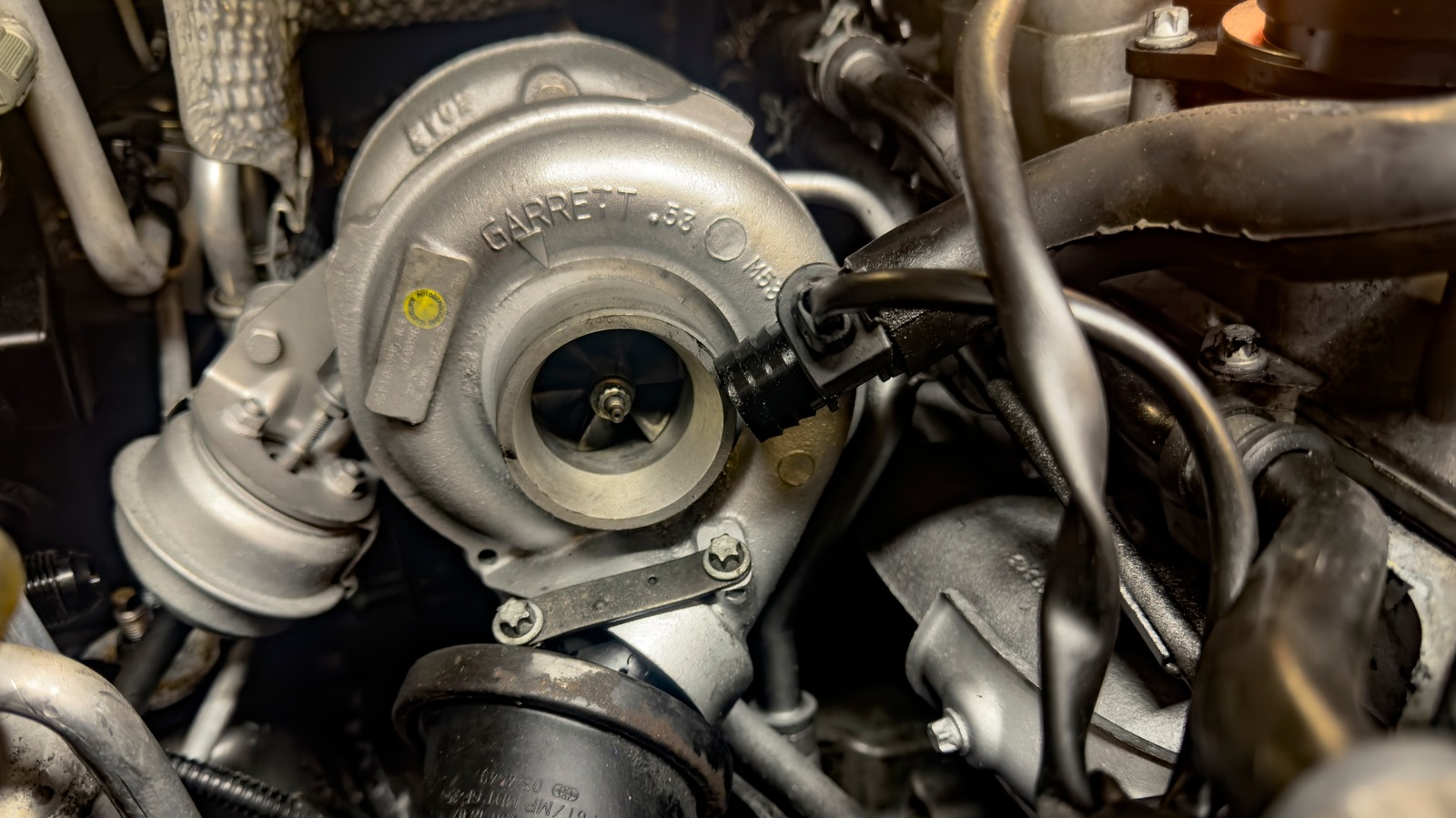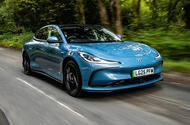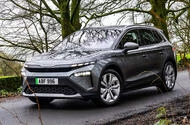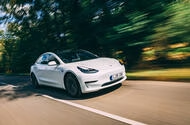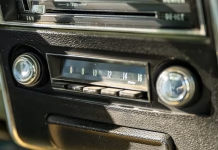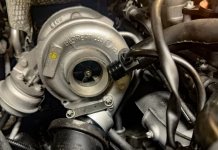MG IM5 Challenges Tesla with Affordable Luxury and Power in the European EV Market
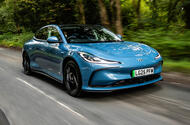 This new EV is MG’s first super-saloon since the V8-engined ZT of 2003. But is it any good? European policymakers are scrambling to protect the interests of their homegrown car makers but the torrent of temptingly priced, technologically rapier-sharp Chinese EV simply flows on. The latest insurgent is this, the MG IM5.It's a saloon (well, a hatchback, technically) priced on par with the Tesla Model 3 but promising the space of the Volkswagen ID 7 plus tech that you would more typically find on a Porsche Taycan – not least an 800-volt platform available on the more expensive derivatives. There is also, if you'd like, the small matter of 742bhp. We'll get into the hardware in a moment, but before that you’re possibly wondering what the ‘IM’ in the name is about. Those initials hold meaning, because they speak to the fact that this new MG isn’t really an MG.It’s a badge-engineered version of the Chinese-market L6 made by Intelligence in Motion, a Shanghai-based brand launched in 2020 that is a collaboration between MG’s parent company SAIC (the majority owner), e-commerce colossus Alibaba Group and Zhangjiang Hi-Tech. This arrangement is a big deal, because the L6 and therefore the European IM5 is a lot more luxurious than anything MG has so far sold since its reimagining as an EV brand, notwithstanding the Cyberster roadster halo model. New ground is being trodden as MG reaches upmarket.In truth, the IM5 is only barely badge-engineered. For reasons we still don't quite understandard, there are no actual MG logos on the car, only an ‘MG’ in IM’s squiggly typeface on the bootlid.So is this an MG or not? You decide, although it hardly matters. Consider that BYD – another major Chinese car maker – is growing so rapidly that it sold more cars in the UK in Q1 of 2025 than it did in the whole of 2024, and in 2025 is outselling Honda and Mazda entirely. Three years ago, few British motorists had even heard of company, but these days cost and capability often matter more than brand recognition. If the IM5 is good, it will sell, despite its unusual, slightly opaque origins.The more interesting question is why MG, whose budget-focused strategy is ticking along nicely, is now taking this more premium model under its wing in Europe (though only to the UK, Norway and Switzerland, for now). The answer is two-fold, although of course profit is at the heart of it. Firstly, the Chinese domestic EV market is now so competitive that car makers’ margins are hammered pancake-thin. The European market remains a juicier prospect, especially if you have a more luxurious product to offer, as the IM5 is. Compared with MG stalwarts like the 5 SW estate, it’s on another level of lavishiness and opens up a fresh revenue front for SAIC. Related to this is the fact that MG wants to push upmarket because corporate sales are, according to MG Motor UK boss Guy Pigounakis, today dominated by brands offering plush electric cars with long ranges and lots of power. This is exactly what the flagship IM5 Performance, with its 100kW battery, 396kW peak charging rate and 3.2sec 0-62mph time, happens to be.Private buyers should certainly pay attention, though. Prices start at less than £40,000 and the IM5 has the very good but far from perfect Model 3 in its sights. There’s an opening here for MG, and if the dynamics and usability stack up, it could very well take it.
This new EV is MG’s first super-saloon since the V8-engined ZT of 2003. But is it any good? European policymakers are scrambling to protect the interests of their homegrown car makers but the torrent of temptingly priced, technologically rapier-sharp Chinese EV simply flows on. The latest insurgent is this, the MG IM5.It's a saloon (well, a hatchback, technically) priced on par with the Tesla Model 3 but promising the space of the Volkswagen ID 7 plus tech that you would more typically find on a Porsche Taycan – not least an 800-volt platform available on the more expensive derivatives. There is also, if you'd like, the small matter of 742bhp. We'll get into the hardware in a moment, but before that you’re possibly wondering what the ‘IM’ in the name is about. Those initials hold meaning, because they speak to the fact that this new MG isn’t really an MG.It’s a badge-engineered version of the Chinese-market L6 made by Intelligence in Motion, a Shanghai-based brand launched in 2020 that is a collaboration between MG’s parent company SAIC (the majority owner), e-commerce colossus Alibaba Group and Zhangjiang Hi-Tech. This arrangement is a big deal, because the L6 and therefore the European IM5 is a lot more luxurious than anything MG has so far sold since its reimagining as an EV brand, notwithstanding the Cyberster roadster halo model. New ground is being trodden as MG reaches upmarket.In truth, the IM5 is only barely badge-engineered. For reasons we still don't quite understandard, there are no actual MG logos on the car, only an ‘MG’ in IM’s squiggly typeface on the bootlid.So is this an MG or not? You decide, although it hardly matters. Consider that BYD – another major Chinese car maker – is growing so rapidly that it sold more cars in the UK in Q1 of 2025 than it did in the whole of 2024, and in 2025 is outselling Honda and Mazda entirely. Three years ago, few British motorists had even heard of company, but these days cost and capability often matter more than brand recognition. If the IM5 is good, it will sell, despite its unusual, slightly opaque origins.The more interesting question is why MG, whose budget-focused strategy is ticking along nicely, is now taking this more premium model under its wing in Europe (though only to the UK, Norway and Switzerland, for now). The answer is two-fold, although of course profit is at the heart of it. Firstly, the Chinese domestic EV market is now so competitive that car makers’ margins are hammered pancake-thin. The European market remains a juicier prospect, especially if you have a more luxurious product to offer, as the IM5 is. Compared with MG stalwarts like the 5 SW estate, it’s on another level of lavishiness and opens up a fresh revenue front for SAIC. Related to this is the fact that MG wants to push upmarket because corporate sales are, according to MG Motor UK boss Guy Pigounakis, today dominated by brands offering plush electric cars with long ranges and lots of power. This is exactly what the flagship IM5 Performance, with its 100kW battery, 396kW peak charging rate and 3.2sec 0-62mph time, happens to be.Private buyers should certainly pay attention, though. Prices start at less than £40,000 and the IM5 has the very good but far from perfect Model 3 in its sights. There’s an opening here for MG, and if the dynamics and usability stack up, it could very well take it.Discover the Best States for Low Car Buying Taxes

Five Reasons the Skoda Elroq Is the Ultimate Family Electric SUV
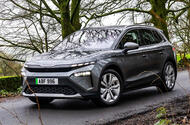 We explore five reasons why What Car? named the Skoda Elroq as its Family Electric SUV of the Year.
We explore five reasons why What Car? named the Skoda Elroq as its Family Electric SUV of the Year.
Skoda has an apparently simple mantra when it comes to developing its electric cars: “Do it once, do it right.” It’s a mantra that sounds simple, but which is remarkably difficult to pull off. Nevertheless, that’s what the company has managed, first with the prizewinning Enyaq electric SUV, and now with this, the award-winning Elroq, a car that stands as a tribute to the brand’s painstaking development process.
So, how has the Skoda Elroq earned its accolade as the What Car? Family Electric SUV of the Year? By being impressively multi-talented, that’s how. Here are five ways in which the new Elroq became What Car?’s best family electric SUV you can buy.
Learn more about the Skoda Elroq
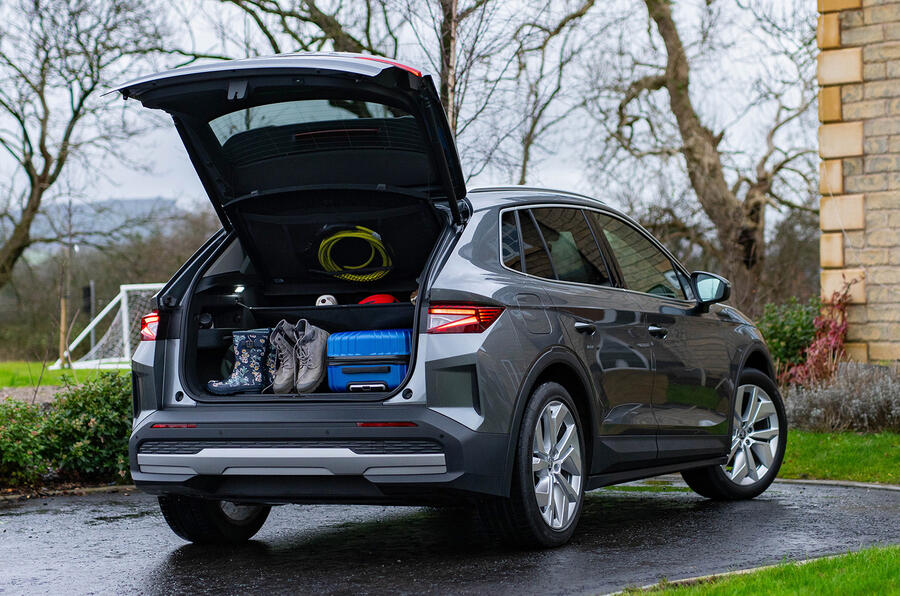
#1 Space and comfort
Skoda has long been known as a brand that specialises in making its cars roomy and practical, and the Elroq certainly delivers in that regard.
As you’d expect, there’s generous space for the driver and front-seat passenger to stretch out in comfort, and the way the driver’s seat “offers support and lines up perfectly with the steering wheel and pedals”, was an area of particular commendation. Then as What Car? states: “it’s in the back that the Elroq really impresses: even a six-footer will have plenty of head and leg room to spare when sitting behind a similarly tall driver”. The cabin is also wide, which means that three people can sit abreast quite comfortably. It helps that the Elroq was “designed from the ground up as an electric car, and has a flat floor”, enhancing comfort for everyone in the back seats. And greater comfort means less chance of squabbles if you have a couple of “competitive” teenagers back there.
When people get into a car, they often bring a lot of stuff with them, but that’s no issue for the Elroq. As What Car?’s testers noted: “There are lots of handy storage cubbies between the Skoda Elroq’s front seats, plus its door bins are large and lined with felt so your possessions don't rattle around”. That’s a prime example of Skoda’s desire to ensure that every journey in the Elroq is perfectly convenient.
That continues in the boot area, where there’s a whole 470 litres of space. And better still, if you follow What Car?’s recommendation and add the Transport Package, the boot area will have not only a net for the underside of the rear parcel shelf to store your charging cable in, but also a height-adjustable boot floor, which “gives you more underfloor storage and reduces the size of the lip at the boot entrance so that it's easier to load and unload heavy items”.
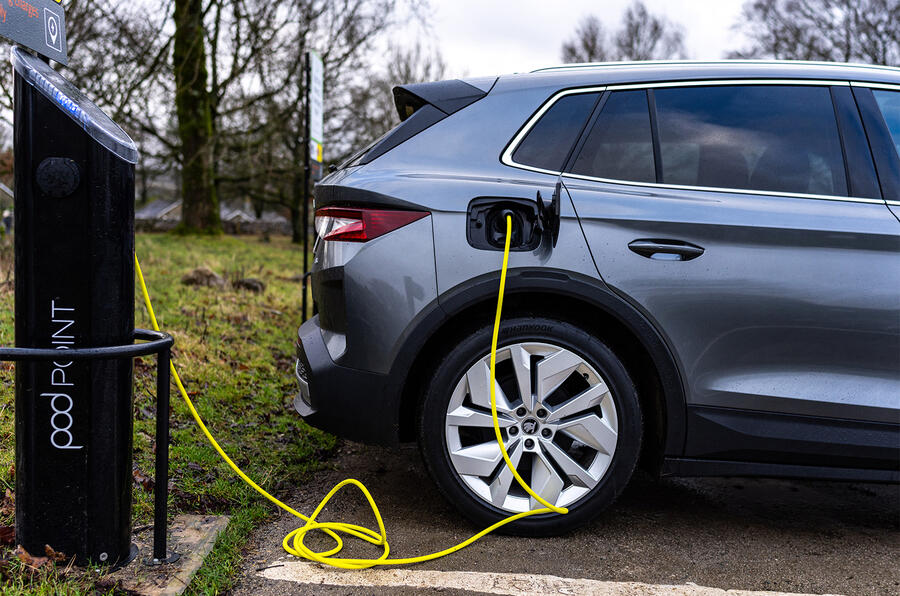
#2 Range and charging
No matter what your daily motoring needs, there is a Skoda Elroq that will fit seamlessly into your life.
The range kicks off with the 50 model, which has a 55kWh battery. This offers a range of 232 miles – more than enough to make day-to-day journeys stress-free experiences.Next up is the 60 model, which features a 63kWh battery. It’s ideal if your motoring life comprises daily urban trips with the odd longer journey.
And at the top of the range sits the 85 model, which has a 82kWh battery and an official range of 355 miles. So, if you need to take a trip from, say, Birmingham to Edinburgh, you’ll be able to cover the distance without giving range a second thought. Anxiety? That’s a thing of the past with an Elroq.
And when the time comes to recharge your Elroq, you won’t have to spend long doing so. The 85 version can be recharged at a maximum rate of 135kW, which means a top-up from 10%-80% takes just 28 minutes – just about long enough for a snack and a beverage. Overall charging times are much the same for the 50 and 60 models, too.
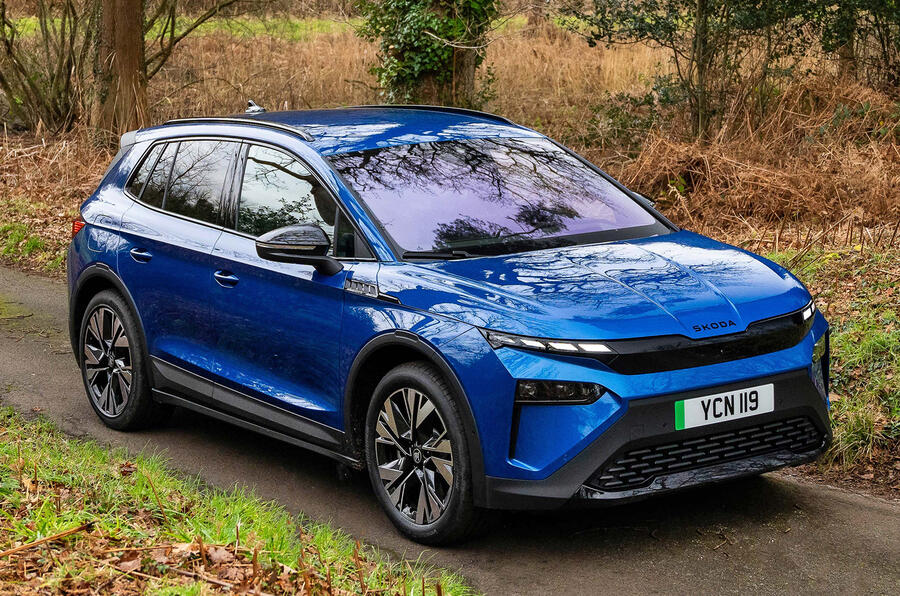
#3 It’s great to drive, everywhere
The Skoda Elroq is the ideal companion on any journey. The 50 model produces 168bhp, then the 60 model generates 201bhp, and the 85 version puts out 282bhp, an output that’s normally the preserve of hot hatchbacks. What this means is that no matter which model you choose, it has more performance than you’re ever likely to need.
You’ll be happy to travel long distances in your Elroq too, because as What Car? says: “The standard suspension absorbs most imperfections in the road surface well and delivers impressive body control on undulating country roads”. However, in further evidence that the Elroq caters for everyone, the 85 SportLine version can be specified with a Driver Package, which includes Dynamic Chassis Control – this is a system that allows you to alter the firmness of the suspension according to the bumpiness of the road, and the sort of driving mood you’re in.
According to What Car?, it has a wide range of configurations, so that “Comfort mode of DCC does exactly what its name suggests”, then “in the stiffest setting, body lean through corners is reduced noticeably”.
What Car? is also full of praise for the Elroq’s brakes, which allow you to pull to a halt smoothly, while the adjustable regenerative system on SportLine Elroqs is also singled out as a useful technology addition.
The well-weighted steering also gives the driver confidence in any situation, while the tight turning circle makes the Elroq very easy to manoeuvre.
Any car can be wearing if it’s too noisy on a journey, but there are no such concerns in the Skoda Elroq, which What Car? tests have shown is quieter than many rivals. Indeed, testers reported: “Big journeys should be relaxing and stress-free – an important consideration given the Elroq’s long-distance credentials.”
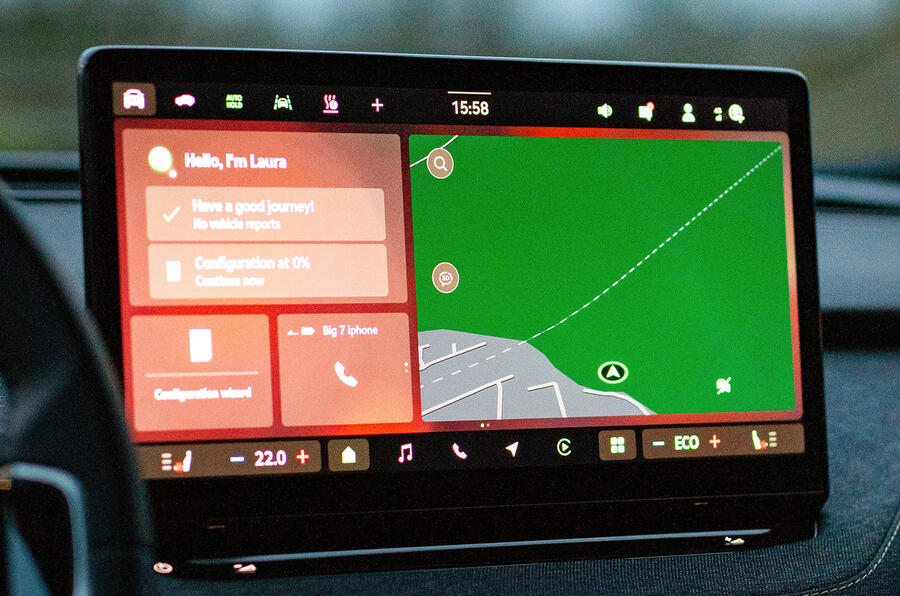
#4 It’s packed with technology
There are four trims available, starting with SE and ascending though SE L, Edition and SportLine, and SE provides proof that when you invest in a Skoda Elroq, you’ll feel like you’re being spoiled. That’s because this version comes with 19-inch alloy wheels, super-bright LED headlights and a dual-zone climate control system for the cabin. And that’s not all – how about heated, self-dimming and electrically folding door mirrors, rear parking sensors, a rearview camera and cruise control?
If you’re the sort who feels the cold, then SE L is the trim for you, because it adds a heated steering wheel and heated front seats. Front parking sensors make tight manoeuvres easier, too.
Edition trim is perfect if you regularly do longer journeys, because you’ll be able to take advantage of the standard adaptive cruise control (which includes traffic jam assist), the wireless smartphone charging, the satellite-navigation system and the ability to select your preferred drive mode. Your Elroq will lock automatically as you walk away from it at journey’s end, too.
SportLine models have an undeniably purposeful presence, thanks to their gloss-black styling highlights, and the upgraded 20-inch alloy wheels. Full Matrix LED headlights ensure no corner of the road goes unlit, and are backed up by the Dynamic headlight range control. An electrically operated tailgate with kick activation just makes life easier when you’re loaded with shopping, and the front sports seats hold you firmly and comfortably on even the most spirited drive.
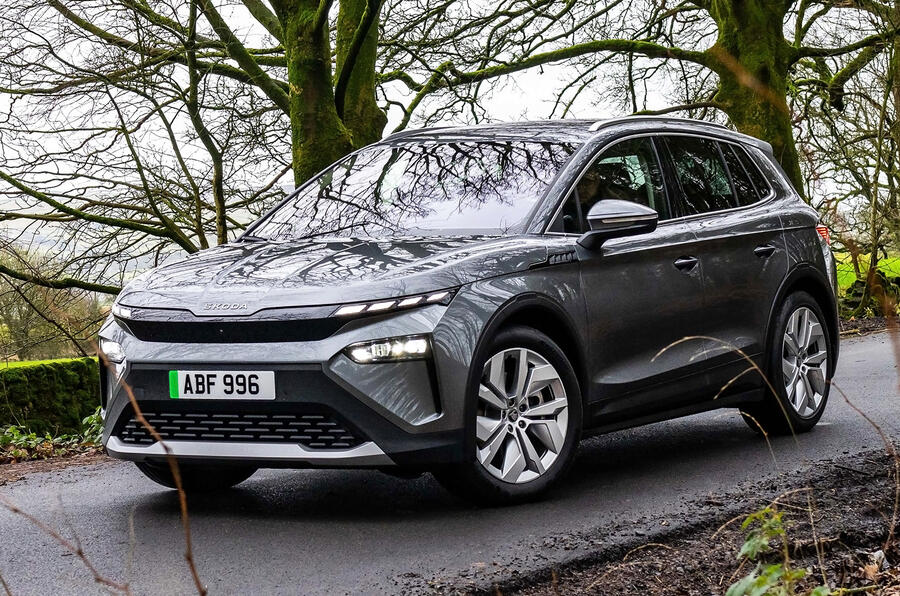
#5 Safety is paramount
The Skoda Elroq is designed to keep you safe and protected during every excursion. Indeed, it contains such a range of both active and passive safety systems that even NASA might be impressed. As What Car? noted: “Even the cheapest version comes with lots of safety kit, including automatic emergency braking (AEB), traffic-sign recognition, a driver attention warning system, blind-spot monitoring and plenty of airbags.”
That AEB set-up is designed not only to stop an inattentive driver from rear-ending a car ahead, but will also help to prevent collisions with pedestrians and cyclists. The Turn Assist system can also prevent a collision while the driver is turning.
That’s not all, because the airbag system even incorporates a “central interaction airbag”, which inflates from the central armrest in a millisecond in the event of a side impact. In doing so, it stops the driver and front-seat passenger coming into contact with each other.
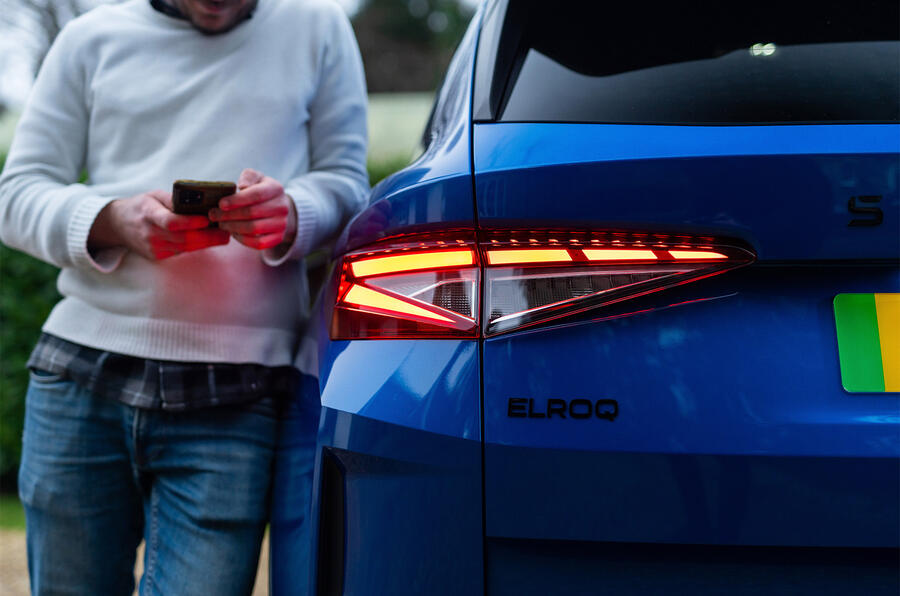
Summary
So there you have it. Five reasons that show how the Skoda Elroq is a car designed for everyone.
It’s for people who want a low-cost car to get around in, but also one that will make them feel special on every journey. It’s for people who want a vehicle that will make them smile during each trip, as well as provide the reassurance of a comprehensive safety net every time they and their family get into it.
And it’s a car that makes sense as a private ownership package, or as a business choice.Like we said – everyone.
Hanoi Set to Ban Gas Motorcycles and Scooters from City Center Within a Year

Volvo Design Chief Jeremy Offer Steps Down After Two Years as Leadership Shifts Continue
 Jeremy Offer resigns; Volvo automotive design boss Nick Gronenthal named his interim replacement
Jeremy Offer resigns; Volvo automotive design boss Nick Gronenthal named his interim replacement
Volvo design chief Jeremy Offer has resigned after two years.
His resignation comes just months after the departure of former Volvo CEO Jim Rowan, who was instrumental in his appointment.
Both executives had come into the car industry as outsiders: Rowan was previously the chief of Dyson and Offer had spent six years as the lead designer for now-defunct van start-up Arrival.
In a statement published by Car Design News, Volvo said Offer tendered his resignation to spend more time with his family; he had had to commute between the UK and Volvo’s base in Gothenburg, Sweden.
Nick Gronenthal, head of automotive design for Volvo, has been appointed as the brand’s interim head of design.
A long-term successor for Offer has yet to be decided, but it seems that former Polestar CEO Thomas Ingenlath – recently appointed to an advisory role overseeing design for Volvo parent firm Geely – will be key in making the decision.
Håkan Samuelsson, who was recently reappointed CEO of Volvo, told Automotive News Europe that Ingenlath’s input will be “highly valued” at Volvo and that “he will help” to coach its designers.
“He can give me some tips also on what I should do – or not do,” added Samuelsson.
How Tariff Policies Ended Up Hurting American Businesses Instead of Helping
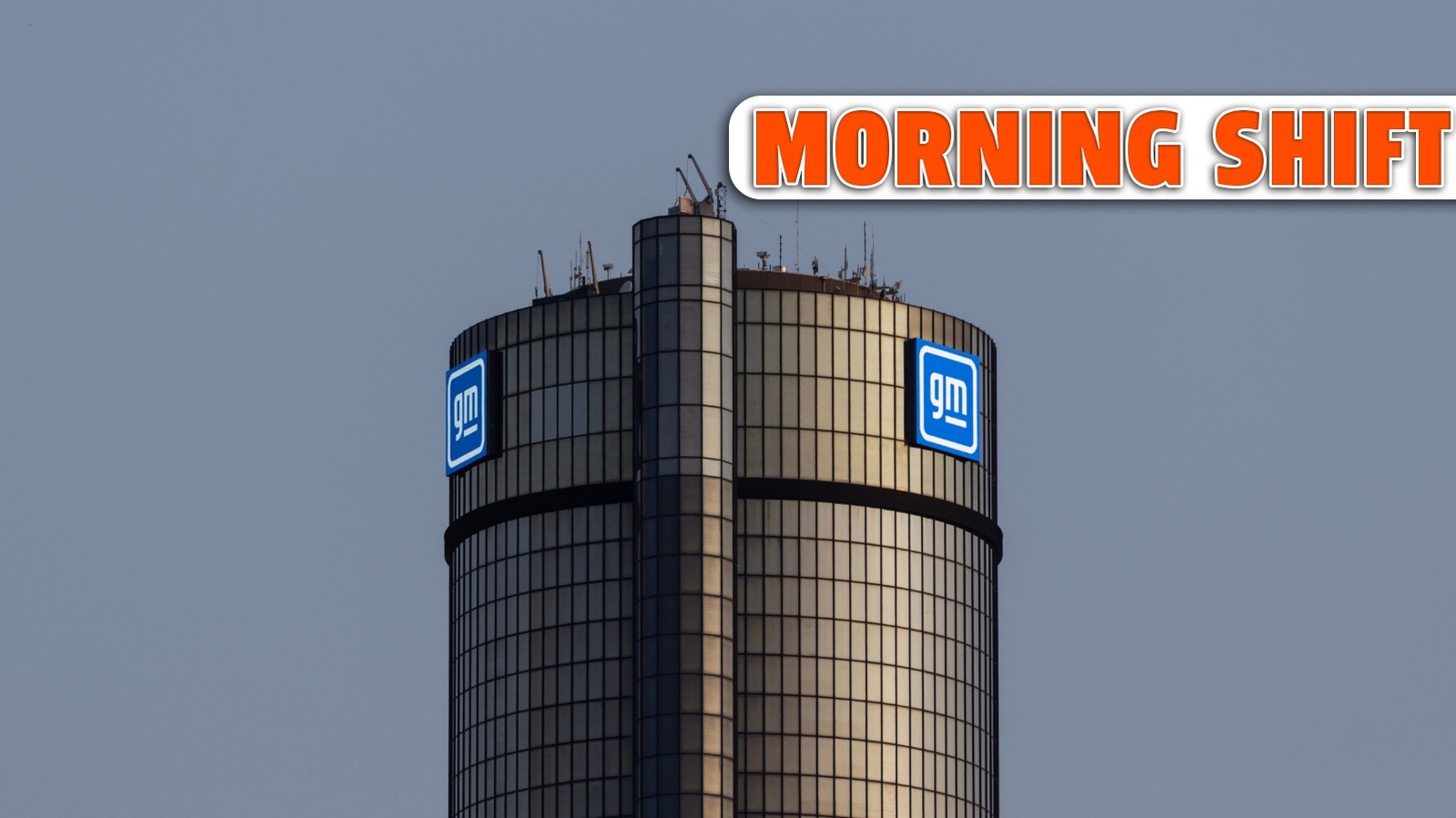
Why Now Is the Perfect Time to Own a Game-Changing Electric Saloon for Just...
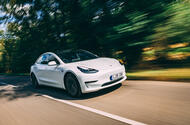 You can now join the world’s million-plus drivers of this ground-breaking electric saloon for just £12k The Tesla Model 3 overcame the stereotypes to prove that EVs could go toe to toe with the very best combustion cars – and range anxiety be damned.Six years on from its UK launch, this sleek electric saloon still has bags of appeal, thanks to its practical interior, class-leading technology and impressive long-distance credentials.The Model 3 was the product that Tesla had always wanted to make: a high-volume, low-cost EV that would enable families to wave goodbye to their oil-burning wagon and embrace ‘clean’ propulsion.And that prospect has proven hugely appealing: it has found more than a million homes worldwide to date and continues to sell strongly.Now that prices have tumbled to just £12,000 for earlier examples, it’s a great time to snap up this world-changing EV.A sub-£15k budget will restrict you to the Standard Range Plus model: it has a 252bhp motor for the rear wheels and a 50kWh battery that was officially good for 254 miles on a charge from new (but expect more like 200 miles in reality).Our pick was the 346bhp dual-motor Long Range, which got a larger, 75kWh battery for a 348-mile range. Around 300 miles is more realistic in practice, but that’s still good going even today.Then there’s the hopped-up Performance, which sacrificed a bit of range in favour of supercar-aping acceleration: with a 444bhp dual-motor powertrain, it can hit 60mph in a BMW M3-like 3.2sec.It got bigger brakes, 20in wheels and a dedicated track driving mode too, but while it certainly has whip-crack acceleration, its chassis lacks the finesse to deliver a truly engaging experience.Modifications therefore aren’t a bad idea if you’re a really keen driver. Specialists such as UK-based Tevo offer pretty transformative brake, wheel and suspension upgrades – although its trick dampers will set you back around £8000.The Model 3 is quite a stiff-legged and firm-riding car, especially in Performance form. Rolling refinement isn’t great and the numb steering provides little feedback, but for mooching around town and punting along rural back roads, it’s generally well mannered. The one-pedal driving mode is a nice touch, too.Tesla fettled the chemistry of its batteries in 2020 to boost official range up to 305, 374 and 340 miles for the three variants.Another update came in 2021, bringing subtle styling tweaks, a standard heat pump to improve efficiency and a larger (82kWh) battery for the Performance.There was then a comprehensive update in 2024, but we won’t cover those cars here as prices haven’t had time to come down yet.Thanks to Tesla’s brilliant Supercharger network, you won’t have any issues charging on the go. There are more than 1000 devices dotted around the UK. Most offer speeds of up to 150kW, while newer ones can give you 250kW for a sub-30-minute 10-80% boost.They’re a doddle to use: plug the car in and then hit start on the touchscreen or Tesla’s smartphone app.Families will have little trouble using the Model 3 as their main car. It has a practical 425-litre boot, and while its sloping roofline limits rear head room, it’s still fairly spacious.There’s plenty of tech wizardry to play with, too: the 15in tablet-like touchscreen even offers streaming and Atari arcade games.The screen is a bit of a swine to use on the move at first – there being no buttons or switches – but it shouldn’t take you too long to get used to it.Combustion-loving EV sceptics are quick to judge the Model 3 for its perceived lack of charisma and questionable build quality.But you will have the last laugh when you fizz past them in smooth, zero-emissions silence.
You can now join the world’s million-plus drivers of this ground-breaking electric saloon for just £12k The Tesla Model 3 overcame the stereotypes to prove that EVs could go toe to toe with the very best combustion cars – and range anxiety be damned.Six years on from its UK launch, this sleek electric saloon still has bags of appeal, thanks to its practical interior, class-leading technology and impressive long-distance credentials.The Model 3 was the product that Tesla had always wanted to make: a high-volume, low-cost EV that would enable families to wave goodbye to their oil-burning wagon and embrace ‘clean’ propulsion.And that prospect has proven hugely appealing: it has found more than a million homes worldwide to date and continues to sell strongly.Now that prices have tumbled to just £12,000 for earlier examples, it’s a great time to snap up this world-changing EV.A sub-£15k budget will restrict you to the Standard Range Plus model: it has a 252bhp motor for the rear wheels and a 50kWh battery that was officially good for 254 miles on a charge from new (but expect more like 200 miles in reality).Our pick was the 346bhp dual-motor Long Range, which got a larger, 75kWh battery for a 348-mile range. Around 300 miles is more realistic in practice, but that’s still good going even today.Then there’s the hopped-up Performance, which sacrificed a bit of range in favour of supercar-aping acceleration: with a 444bhp dual-motor powertrain, it can hit 60mph in a BMW M3-like 3.2sec.It got bigger brakes, 20in wheels and a dedicated track driving mode too, but while it certainly has whip-crack acceleration, its chassis lacks the finesse to deliver a truly engaging experience.Modifications therefore aren’t a bad idea if you’re a really keen driver. Specialists such as UK-based Tevo offer pretty transformative brake, wheel and suspension upgrades – although its trick dampers will set you back around £8000.The Model 3 is quite a stiff-legged and firm-riding car, especially in Performance form. Rolling refinement isn’t great and the numb steering provides little feedback, but for mooching around town and punting along rural back roads, it’s generally well mannered. The one-pedal driving mode is a nice touch, too.Tesla fettled the chemistry of its batteries in 2020 to boost official range up to 305, 374 and 340 miles for the three variants.Another update came in 2021, bringing subtle styling tweaks, a standard heat pump to improve efficiency and a larger (82kWh) battery for the Performance.There was then a comprehensive update in 2024, but we won’t cover those cars here as prices haven’t had time to come down yet.Thanks to Tesla’s brilliant Supercharger network, you won’t have any issues charging on the go. There are more than 1000 devices dotted around the UK. Most offer speeds of up to 150kW, while newer ones can give you 250kW for a sub-30-minute 10-80% boost.They’re a doddle to use: plug the car in and then hit start on the touchscreen or Tesla’s smartphone app.Families will have little trouble using the Model 3 as their main car. It has a practical 425-litre boot, and while its sloping roofline limits rear head room, it’s still fairly spacious.There’s plenty of tech wizardry to play with, too: the 15in tablet-like touchscreen even offers streaming and Atari arcade games.The screen is a bit of a swine to use on the move at first – there being no buttons or switches – but it shouldn’t take you too long to get used to it.Combustion-loving EV sceptics are quick to judge the Model 3 for its perceived lack of charisma and questionable build quality.But you will have the last laugh when you fizz past them in smooth, zero-emissions silence.Congress Revives AM Radio Giving Carmakers Six Years to Adapt
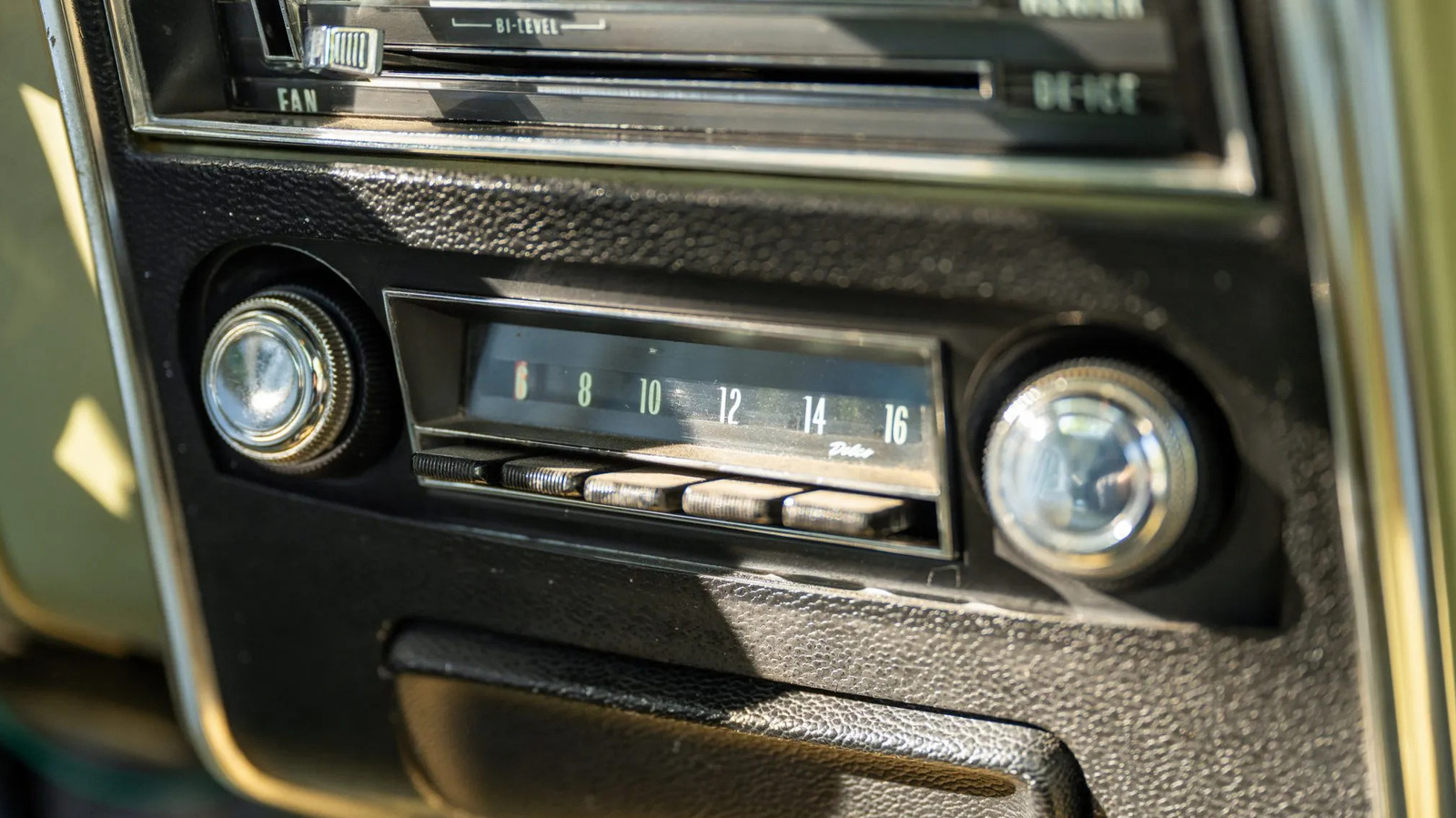
Top 10 Family SUVs for 2025 Spacious, Versatile, and Ready for Every Adventure
 What's the best SUV for the entire family? We've listed our top picks...
What's the best SUV for the entire family? We've listed our top picks...
With estate car-like space, a high driving position ever-improving driving dynamics, family SUVs have largely become a go-to choice for drivers.
Not only are they ideal for ferrying the kids to school, but family SUVs are also useful for transporting cargo, long-distance commutes and holidays, be it in the UK or hopping on the ferry over to Europe.
In 2025, there’s more choice than ever. Family SUVs are available in petrol, diesel and hybrid guises, but there’s also an ever-increasing number of electric options out there.
There’s also a varied choice of front-, rear- and four-wheel drive, although a proper hardcore off-roader should be considered if you’re planning on some proper mud-plugging.
Our top 10 lists are curated following extensive testing from our experienced team of experts. Our top pick is the Skoda Kodiaq; read on to find out why, plus a series of contenders which are closing in…
Do Turbo Engines Really Need More Frequent Oil Changes?
